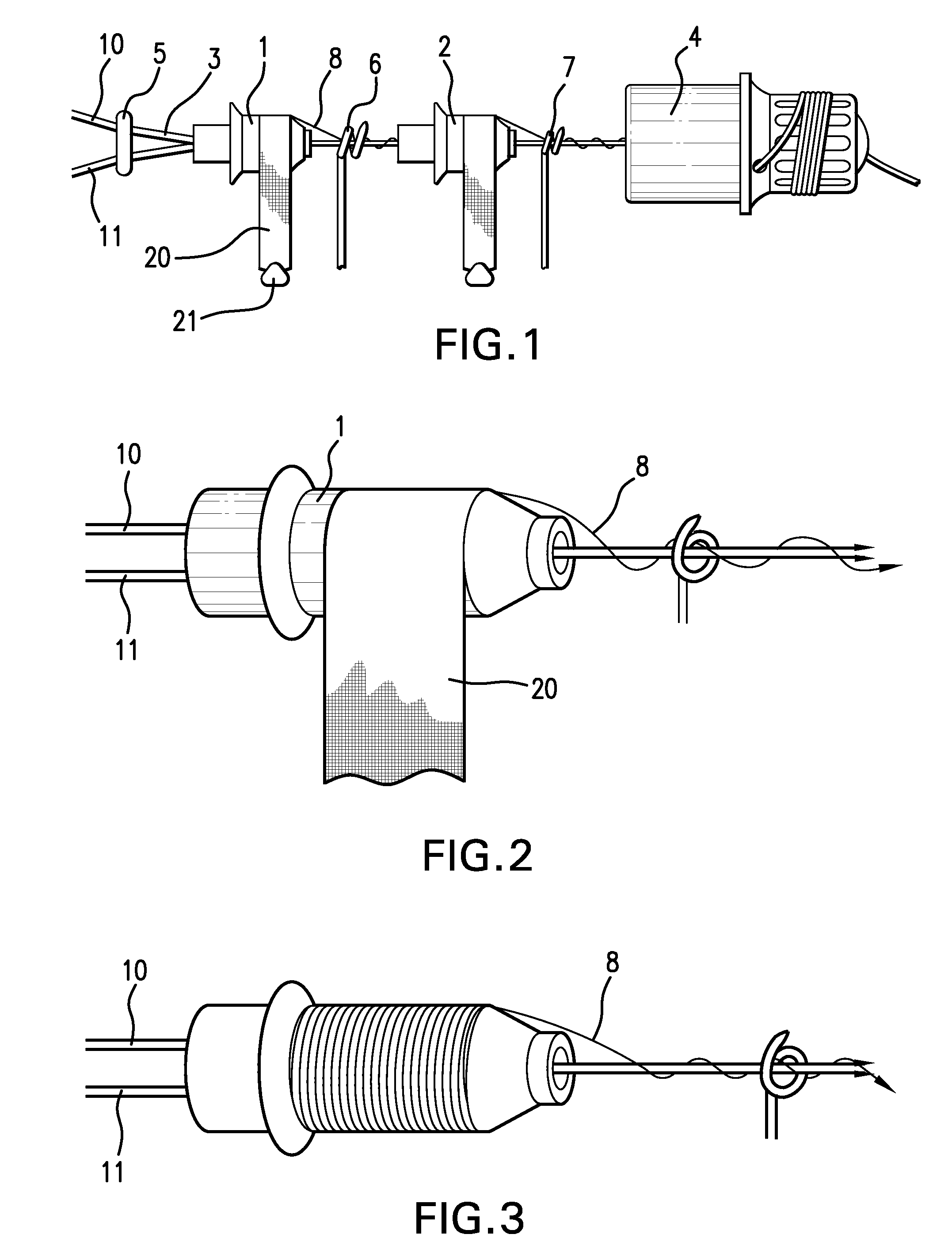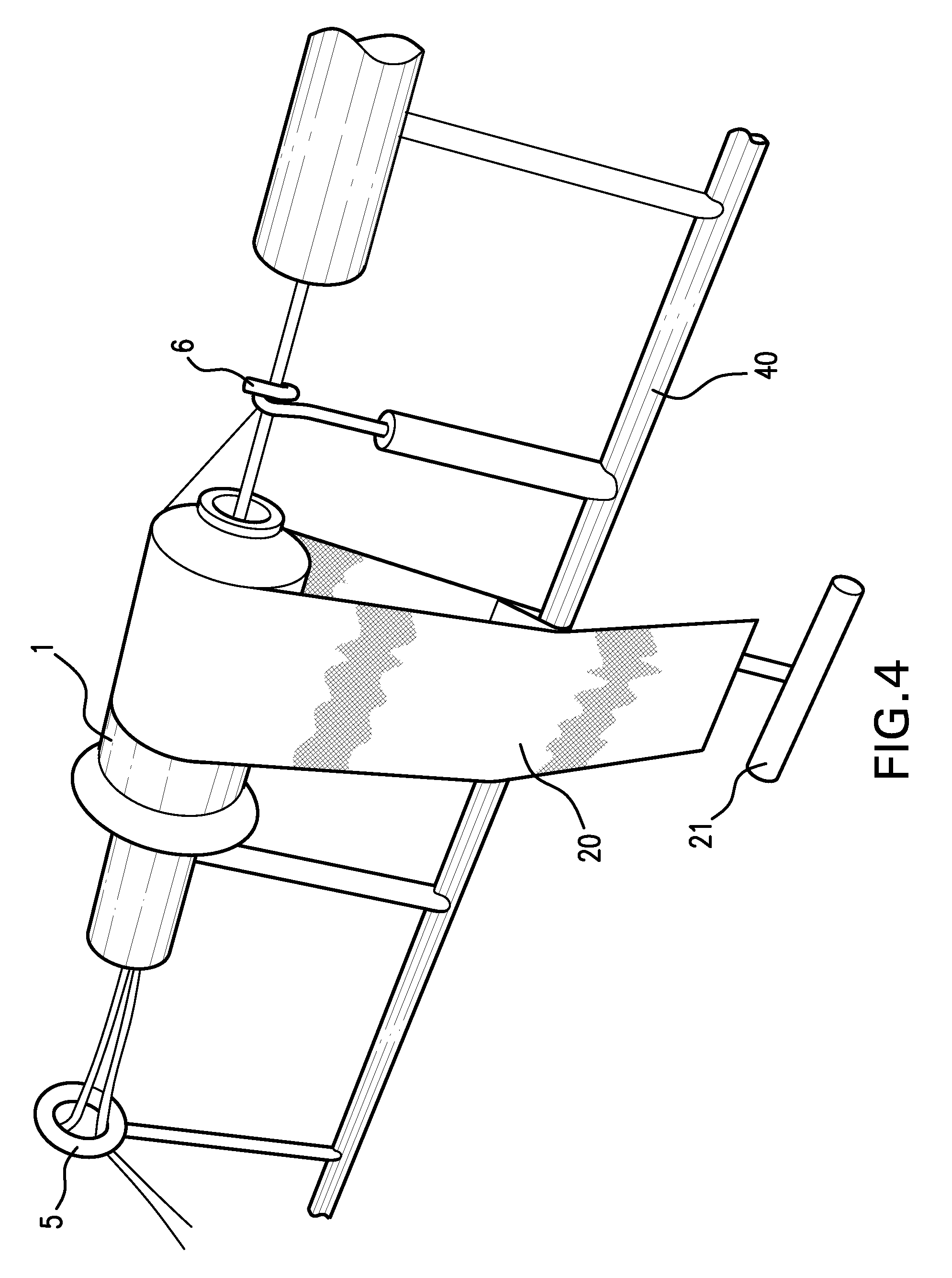Automatic lacer for bundles of polymeric fiber
a bundle and polymer technology, applied in the field of modules, can solve the problems of clogging the feeder, dragging the product, and the fibers tending to splay out, so as to reduce the clogging and potential stoppage of downstream equipment, prevent the fiber from clogging, and improve the gas separation or other qualities
- Summary
- Abstract
- Description
- Claims
- Application Information
AI Technical Summary
Benefits of technology
Problems solved by technology
Method used
Image
Examples
example
[0042]Three different polymers were used to form fiber membranes. The polymers were selected to be useful in separating oxygen and nitrogen. These polymers were designated as 1, 2, and 3. The fiber bundles made of these materials were tested with either no lacer, a single lacer, or two lacers in series (the latter being what is shown in the figures). That is, these fiber bundles were woven into a fabric mat, and the fabric mat was rolled up and placed in a module housing. The flux of oxygen, and the selectivity between oxygen and nitrogen, were measured and compared. The results are shown in the following table:
[0043]
Oxygen FluxTest Conditions*10−6 (scc / sec · cm2 · cm Hg)O2 / N2 SelectivityFiber 1, no lacer22.044.79Fiber 1, single lacer22.196.42Fiber 2, no lacer23.955.64Fiber 2, two lacers23.886.28in seriesFiber 3, no lacer22.104.64Fiber 3, two lacers20.315.67in series
[0044]For all three fiber materials used, the selectivity was significantly improved with the use of the lacer of the ...
PUM
| Property | Measurement | Unit |
|---|---|---|
| weight | aaaaa | aaaaa |
| friction | aaaaa | aaaaa |
| energy | aaaaa | aaaaa |
Abstract
Description
Claims
Application Information
 Login to View More
Login to View More - R&D
- Intellectual Property
- Life Sciences
- Materials
- Tech Scout
- Unparalleled Data Quality
- Higher Quality Content
- 60% Fewer Hallucinations
Browse by: Latest US Patents, China's latest patents, Technical Efficacy Thesaurus, Application Domain, Technology Topic, Popular Technical Reports.
© 2025 PatSnap. All rights reserved.Legal|Privacy policy|Modern Slavery Act Transparency Statement|Sitemap|About US| Contact US: help@patsnap.com



